It is no secret that I am a huge fan of the Otovent as a method of improving equalisation and practicing equalisation techniques like the Frenzel and the Mouthfill. So imagine how pleased I was to discover Otovent had recently launched an Otovent equalisation aid for freedivers and scuba divers called Otovent Dive.
A little background….
The original Otovent was developed and launched in 1993 by Kestrel Medical to help people suffering from glue ear. Glue ear is a condition, mainly found in children, where the eustachian tube which connects the back of the throat with the middle ear can’t easily open to allow air to enter the middle ear. As a result, fluid starts to be secreted from the cells lining the middle ear which then accumulates and cannot be released, as the eardrum is a barrier one way, and the blocked eustachian tube the other.
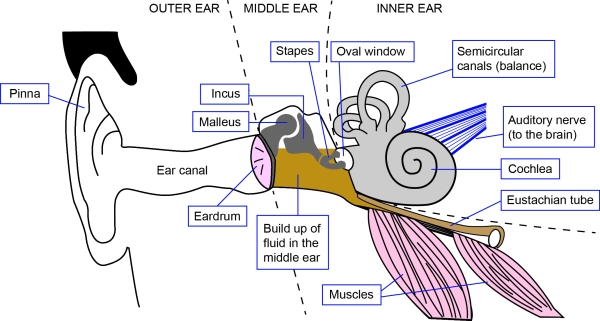
This can cause hearing reduction or loss, pain, dizziness and clumsiness, sleep issues, irritability, tinnitus and speech development issues in children. In addition, glue ear causes infection and this can lead to perforated eardrums as the build up of infected fluid pushes out against the ear drum until it breaks. As a result, grommits are often used to treat glue ear.
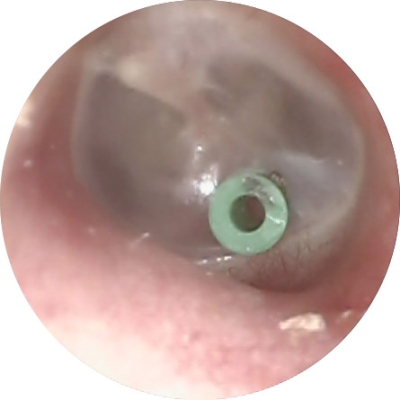 Grommits are tiny tubes that are inserted into the ear drum to keep air flowing into the middle ear. However there are serious side effects if you are a water baby. You cannot submerge the head in water, there is still a risk of infection, and you are permanently scarring and thus weakening the ear drum.
Grommits are tiny tubes that are inserted into the ear drum to keep air flowing into the middle ear. However there are serious side effects if you are a water baby. You cannot submerge the head in water, there is still a risk of infection, and you are permanently scarring and thus weakening the ear drum.
The Otovent was developed to be a less invasive, safer and less traumatic way to alleviate glue ear in children by allowing them to use the device to open the eustachian tube and allow accumulated fluid to pass out and air to travel in, thus removing the initial cause of glue ear in the first place.
The device is simple – a tiny balloon is attached to a small nozzle that plugs one nostril. You close the other nostril off with a finger and then blow out through the nostril connected to the otovent which open the eustachian tube.
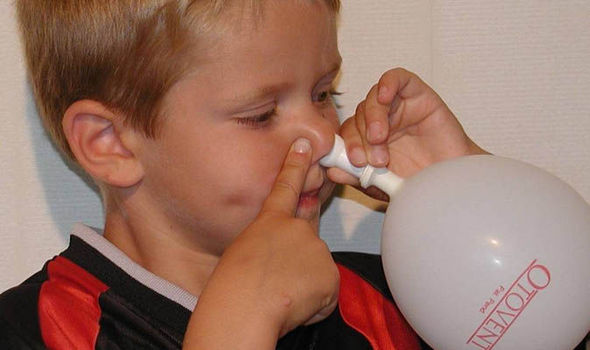
Another way to use the device is to blow the balloon up, seal the air in with the finger and thumb from one hand, and then place the otovent against one nostril. Then you fill your mouth with some water, plug the other nostril closed, release the air into the mouth and then swallow. This video explains how it works with some graphics.
The otovent was invented to treat glue ear, however freedivers soon realised that it could be an excellent equalisation aid for freedivers too. Not only can it be used to help improve the eustachian tubes and improve equalisation, it can also be used to train the Frenzel technique and for Master Freedivers it is an important piece of kit for learning mouthfill equalisation!
Why did Otovent create an equalisation aid for freedivers and Scuba divers?

Realising the potential for the otovent to help glue ear in adults as well as children, as well as helping people deal with pressure changes during flying (plus the fact that the otovent was already being used as an equalisation aid for freedivers and scuba divers), the development team decided to market the otovent to these four different markets: children, adults, flying and diving.
The principle of the product remains the same, with the nose plug and balloons, however with slightly different size and strength balloons and different packaging.
As many freedivers will attest (myself included), equalising correctly can be one of the most difficult aspects of learning to freedive. Most freedivers are limited not by breath hold or physical ability, but by their ability to move tiny amounts of air through their eustachian tubes to equalise the middle ear. In addition, a baratrauma (pressure related injury) can keep you out of the water weeks, sometimes months and so we want to make sure we always equalise correctly and often enough. Any equalisation aid for freedivers that is available in my opinion should be utilised if you do not find equalisation easy and automatic.
What does the kit contain?
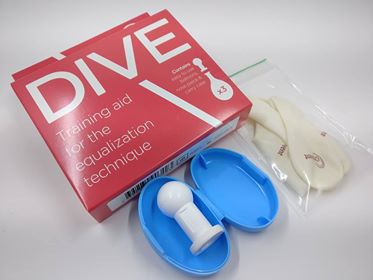
Each kit contains:
1 x nostril piece
3 x pressurised balloons
1 x carry case
Replacement balloons can be purchased too.
How does it work as an equalisation aid for freedivers?
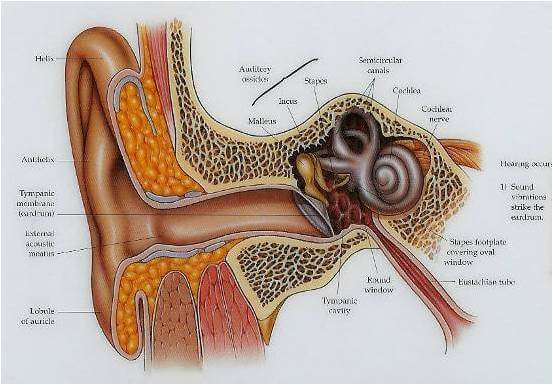
The Otovent is a very simple device, and because it works as a visual aid it can also help the user, as well as any instructor, identify whether the user is performing the Frenzel equalisation technique correctly. Mastering the technique of inflating the device is a great indicator as to whether the user is ‘on the right tracks’ in terms of learning to use their tongue to equalise.
When learning the Frenzel, the balloon will inflate when the back of the tongue is engaged, creating positive pressure in the mouth and nose. And because the balloons provided in the kit are pressurised, this encourages the eustachian tubes of the ear to open when inflated via the nose.
How do you use an Otovent Dive to practice the Frenzel equalisation technique?
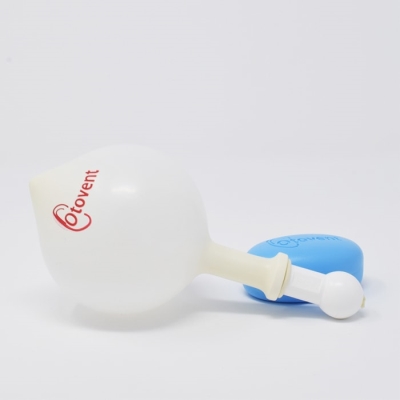
Firstly, it is highly recommended that you do not share an Otovent, from a hygiene point of view alone there is the potential for plenty of nasal mucus to be transferred not only onto the nose piece but into the balloons too!
To use the device here is what you need to do when practicing the Frenzel equalisation technique:
Firstly, check that you can perform the Valsalva equalisation technique.
Connect the balloon to the nose piece (as illustrated above). Next, hold the round part of the nose piece firmly against the right nostril with the right hand and press the left nostril closed with the left hand.
Once the device feels comfortably in place, inhale via your mouth, then close your mouth and gently force the air through your open right nostril to inflate the balloon. It is recommended that you inflate the balloon to the size of a grapefruit! This is to show that you can perform the Vasalsva equalisation technique. Repeat the process with the opposite nostril. If you feel a pressure change, click or pop you have equalised!
Now it’s time to see the difference with the Frenzel! For a more detailed description of how to do the Frenzel, including a video, please click here. Hold the round part of the nose piece against the right nostril with the right hand and press the left nostril closed with the left hand.
Make sure there is a small amount of air in the mouth, and then use the back of the tongue, as if saying ‘Kuh’ or ‘Guh’ to squeeze air between the back of the tongue and the roof of the mouth. As you do this, the balloon should inflate slightly, showing that you have performed the Frenzel equalisation technique. Repeat the process with the opposite nostril.
How do you use an Otovent Dive to practice the Mouthfill equalisation technique?
The Mouthfill equalisation technique is taught on our Master Freediver course and is used when freediving beyond the residual volume of the lungs. Most freedivers reach residual volume at 30m, with freedivers with a more flexible diaphragm and rib cage (and thus a lower residual volume) reaching their ‘failure depth’ at 40m.
To therefore dive deeper than one’s residual volume it is necessary to bring the remaining available air up from the lungs into the mouth as you begin to reach your residual volume, shut the epiglottis to create a discreet air space above it, and use the air in your mouth to equalise the middle ear, sinuses and mask.
The most difficult part of learning the Mouthfill equalisation technique is being able to keep the epiglottis closed and the soft palette in a neutral position as they are linked muscles, meaning that when the epiglottis is closed, so too is the soft palette. This is where using the equalisation aid for freedivers – Otovent Dive – comes in!
First up, you can use your Otovent to check that you have separated the epiglottis and soft palette.
- Blow the balloon up, pinch it shut using a finger and thumb, keeping the nose piece in your mouth
- Shut the epiglottis
- Put the soft palette in a neutral position and slowly start releasing the air from the balloon back into your mouth
If the soft palette is neutral then the air should flow from the balloon, into your mouth and then out your nose. You may feel resistance near the back of your throat as you do this. If you think it is working, then move onto the next step:
- Blow the balloon up, pinch it shut using a finger and thumb
- Put the nose piece blocking one nostril and block the other nostril with a finger
- Shut the epiglottis and open the mouth
- Put the soft palette in a neutral position and slowly start releasing the air from the balloon back into your mouth
If the soft palette is neutral then the air should flow from the balloon, into your nose and then out your mouth. You may feel resistance near the back of your throat as you do this. If you think it is working, repeat with the other nostril and then move onto the next step:
- Reverse pack until there is only enough air left to fill up your mouth
- Shut the epiglottis
- Put the nose piece blocking one nostril and block the other nostril with a finger
- Put the soft palette in a neutral position and use the air in your mouth to fill the balloon, aided by the back of your tongue
- Repeat with the other nostril
Working? Congratulations! You’ve just used the Otovent to learn how to mouthfill!
Does the Otovent Dive really work?
In short, yes! I have seen repeated success with this device for students and wouldn’t hesitate to recommend it to any students experiencing issues equalising. As an equalisation aid for freedivers it not only helps you practice the different techniques, it also helps release any middle ear congestion and the eustachian tube to easily open,
It’s success was also proved in a clinical trial “Point Prevalence of Barotitis and Its Prevention and Treatment with Nasal Balloon Inflation: A prospective, Controlled Study” by Stangerup et al where the device was used to equalise middle ear pressure during flights.
In the study passengers were measured via tympanometry and otoscopy before and after their flights. They were split between a control group and a balloon inflation group.
Passengers who were unable to equalize inflated a nasal balloon, and in 69% of cases, this manoeuvre cleared the middle ear pressure.
Why is equalisation so important?
If a freediver fails to equalise, not only does this cause at a minimum, discomfort, but it can lead to painful middle ear barotrauma through to perforated ear drums and permanent hearing damage.
See the table below to see what affect different depths have on pressure:
Depth (ft)
Pressure
What Happens
1 0.445 psi water pressure against the outside of your eardrums causes them to flex inward and you feel pressure in your ears. 4 1.78 psi Your eardrums bulge into your middle ears. Nerve endings in your eardrum stretch You begin to feel pain. 6 2.67 psi Your eardrum stretches further. Tissues begin to tear, causing inflammation that will last up to a week. 7 Small blood vessels in your eardrums may expand or break, causing bruising which will last up to three weeks. Your Eustachian tubes are now locked shut by pressure, making equalization impossible. Pain increases. 8 3.56 psi Blood and mucus is sucked from surrounding tissues and begins to fill your middle ear – middle ear barotrauma Fluid, not air, now equalizes pressure on your eardrums. Pain subsides, replaced by a feeling of fullness in your ears which will remain for a week or more. 10 4.45 psi Your eardrums may break. Water will flood your middle ear. This may cause vertigo, especially if only one eardrum breaks. You may also rupture the membrane between your middle and inner ears – inner ear barotrauma. Temporary or sometimes permanent, hearing loss may result.
How much is the Otovent Dive?
We sell the equalisation aid for freedivers – Otovent Dive for £12 for non club members and £10 for members. We have plenty in stock and can also send them out in the post if you are not coming to a course or club weekend. Please contact us for a price including shipping and invoice
Is the Otovent the only equalisation aid for freedivers?
Absolutely not. There is more than one type of equalisation aid for freedivers that you can use to help improve or progress your ability to equalise.
Every person is different in terms of their physical make-up. Some people find equalisation for freediving easy, others may find equalisation a real struggle. The Otovent Dive is just one equalisation aid for freedivers.
Another product I highly recommend as equalisation aid for freedivers (and is a staple piece of kit for many freedivers are Doc’s proplugs).
Doc’s Proplugs
Doc’s Prolugs are silicone plugs that fit inside the outer part of the ear. They come in all different sizes, from children up to adults and are either vented or non-vented. Doc’s Proplugs claim that they make equalisation faster, easier and safer and I certainly can attest to that.
The reason these are an excellent equalisation aid for freedivers is because they are vented – they have a tiny hole in the part that fits inside your ear canal which allows tiny amounts of water to enter the space between the Proplug and the eardrum, preventing baratrauma. You can read more about them, here.
Herbal remedies
Another common cause of equalisation issues is inflammation and irritation caused by repeated and fast pressure changes, which occur when a freediver is repeatedly decending and ascending 10m.
Many freedivers use Non-Steroidal Anti-Inflammatory Drugs such as Ibuprofen. However these can cause some unpleasant side effects.
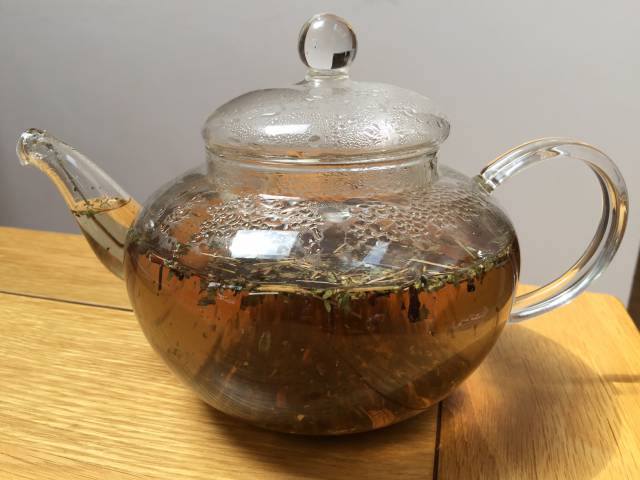
Using herbs medicinally can a much gentler way to address equalisation issues. Although you should always consult a medical herbalist or doctor. The two herbs identified as equalisation aid for freedivers are Plantain and Eyebright. Find out why they work and how to use them, here.
Steam inhalation with essential oils
Steam inhalation for freediving is one way that you can help clear sinuses, and reduce inflammation and infection, without side effects. It’s eas to do and a useful weapon in your equalisation arsenal.
As well as sinuses being congested through having a cold, they can also be congested through allergies and affected by dry air. Allergies are unique to each individual, but exposure to the particular allergen can often cause inflammation and a stuffy nose.
When your sinuses are bunged up, usually as a result of having a cold, it means that your equalisation will be affected. For most people, sinus congestion equals the end of their freediving session. It can be experienced as a sharp pain or pressure in the cheeks, forehead or teeth. If you carry on freediving then it is likely that you will get a sinus baratrauma which will usually be painful and result in a mask full of blood as your sinus capillaries rupture. Find out how steam inhalation can help with equalisation and what oils work best, here.
Neti pot
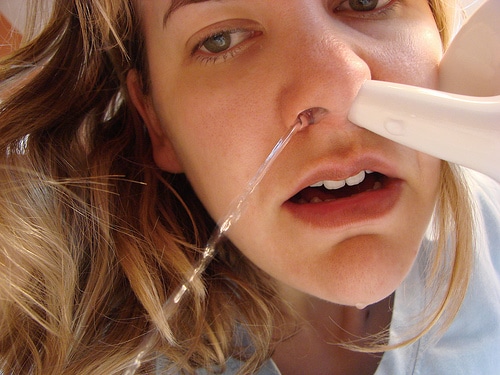 A clear nasal cavity means an easier time of getting the pressure right in your sinuses. A neti pot is a simple device used to clear your nasal cavity.
A clear nasal cavity means an easier time of getting the pressure right in your sinuses. A neti pot is a simple device used to clear your nasal cavity.
So while it doesn’t look particularly attractive to use, it certainly does a great job of clearing mucus and general gunk from your nasal cavity, ensuring your cavities are as clear as possible before your dive.
Further reading for equalisation
Using just one equalisation aid for freedivers (or a combination of many) should significantly improve your chances of equalising. For further reading on equalising, these articles may also help:
Equalisation Tips From Go Freediving 10 awesome tips to help with your equalisation
The Definitive Guide to the Frenzel Technique a jam-packed article with videos demonstrating and explaining the Frenzel Technique
Equalisation For Freediving A chapter from the beginner’s guide to freediving, which explains all about equalisation and why it is important.
Learn to freedive with Go Freediving
Go Freediving is the longest established, most experienced and friendliest freediving course provider in the UK, led by world class freediving instructor trainer Emma Farrell, and her team of personally trained instructors. No other course provider has such a good instructor to student ratio, safety record and personal touch.
Whether you’re freediving in November or any other time of year, a beginner dipping your toes into the world of freediving, a seasoned pro looking to turn professional, or simply a freediver of any level who wants the best freediving holiday in the world, we’re here for you!
Also check out our online guide, The Beginners Guide to Freediving by clicking here!
Keep in touch with everything Freediving
Subscribe to our mailing list for weekly newsletters with exclusive articles, news, films, offers and more!
And check out You Tube!

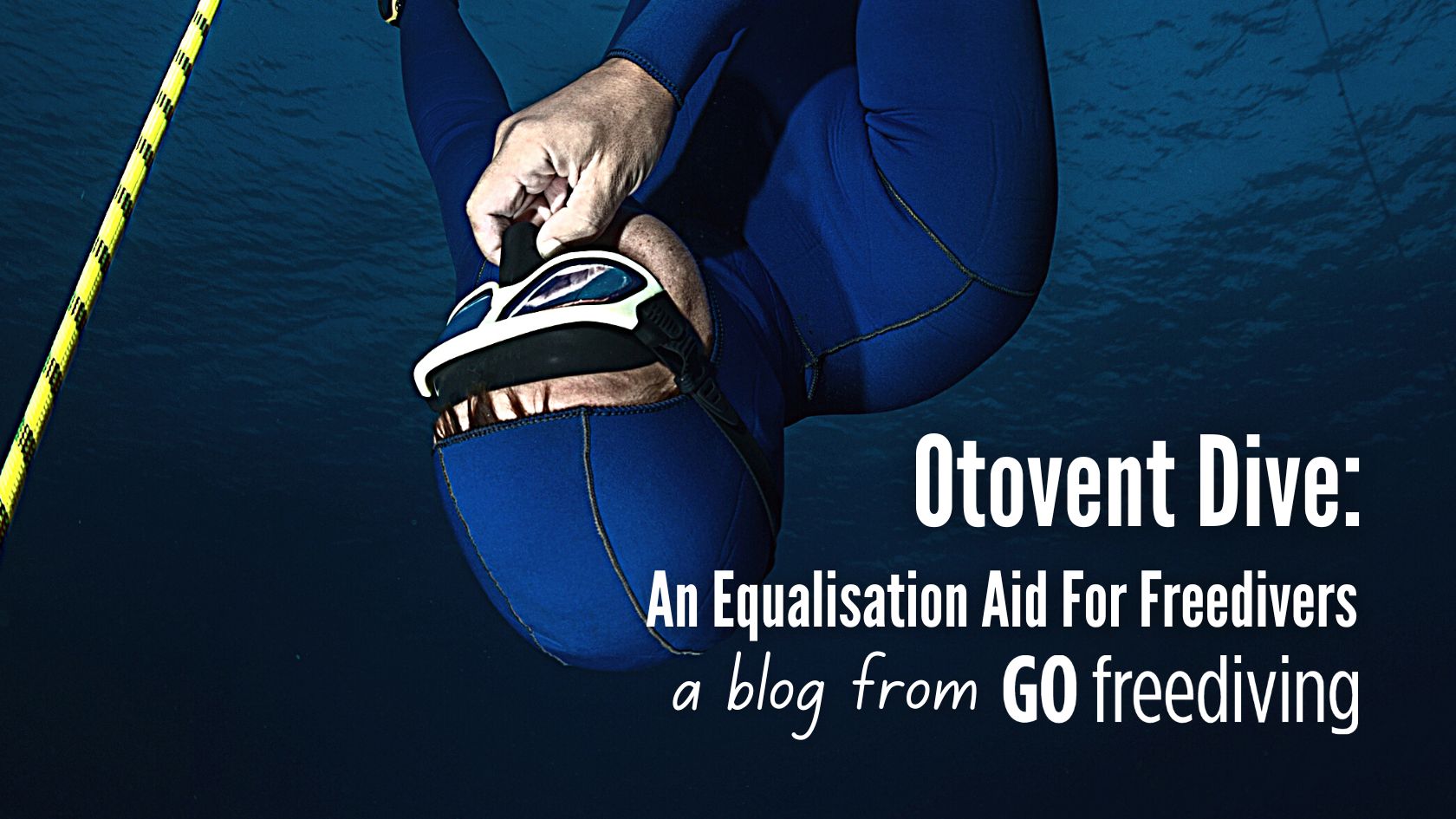

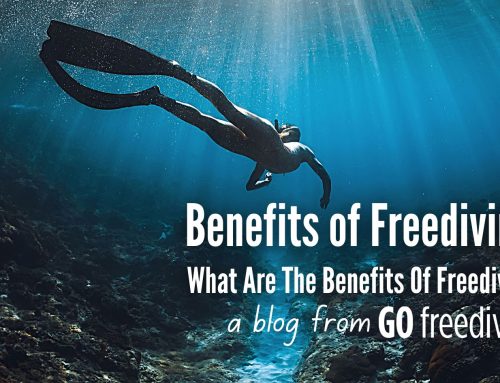
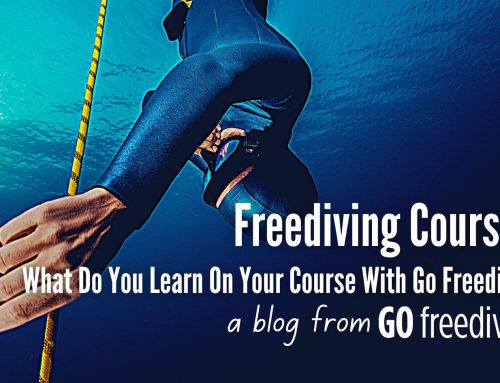
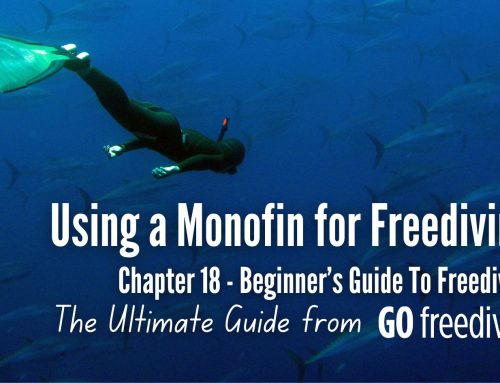

Leave A Comment